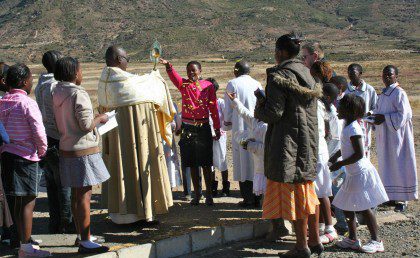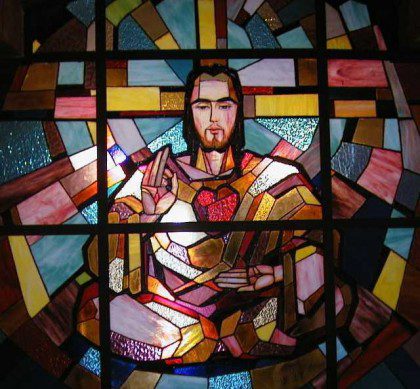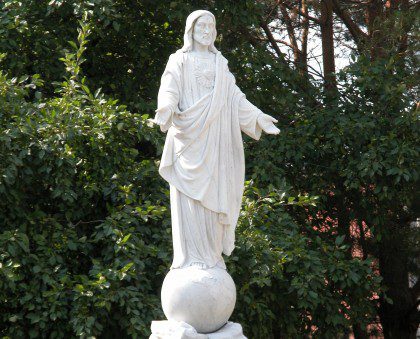
Fr. General’s letter for the Feast of the Sacred Heart of Jesus, June 15, 2012
Each year the general administration of the Priests of the Sacred Heart publishes a letter on the occasion of its feast day. A prayer service for the day has also been prepared. Click here to download the PDF of it.
Introduction
The topic of internationality which the General Administration offers the congregation for the Feast of the Sacred Heart this year and which continues the series of reflections begun in prior years indicates a basic dimension of our life as Christians and Dehonians. The amplification of our vision of the world to enfold the diversity among nations races and cultures and of the parity in dignity among all people created in the likeness of God is a fundamental part of being Christian and an implicit requirement of our mission and our adherence to the gospel.
I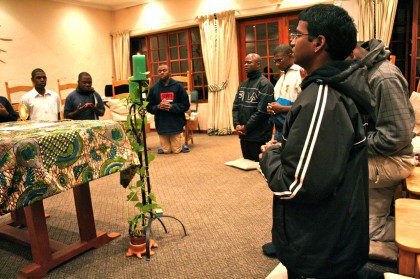 nternationality, as an expression of the universality of God’s plan for humanity, arises with new urgency and new possibilities in today’s world. We cannot remain indifferent to globalization, to the great waves of migration among peoples, and to the multicultural character of our cities. These are signs of our times that demand a new outlook and a new commitment.
nternationality, as an expression of the universality of God’s plan for humanity, arises with new urgency and new possibilities in today’s world. We cannot remain indifferent to globalization, to the great waves of migration among peoples, and to the multicultural character of our cities. These are signs of our times that demand a new outlook and a new commitment.
The present situation of our congregation presents us with challenges that insist on a change in thinking and attitude, in management of material and personnel resources, in international collaboration. The aging of the majority of our older provinces, the emergence of newer and more youthful entities in various countries, the unity of the congregation notwithstanding a variety of cultures, and formative training to live in our world of rapid change are among the factors that call for such changes.
The motto of the last General Chapter, “The love of Christ urges us”, should guide us in our examination of the ways to do this within the church and the world. The contemplation of the open Heart of the Savior, from which the Spirit comes down upon humanity, constitutes the source and inspiration of this universalist attitude. It is in its light that we propose this reflection as our contribution to a faithful examination of our charismatic legacy before the church and today’s world.
1 The Experience of the Church
The basis of the universal scope of our Dehonian lives is found at the center of the gospel message and the life of the church. We are not engaged in seeking some alignment with the spirit of globalization that marks our era, nor are we seeking a strategy for dealing with the problems that face the congregation. Such factors, even if important, are not decisive. They ought instead to be seen as signs of the times which invite us to reflect on our heritage and send us out on our way in fidelity and renewal.
Already during the first covenant, those periods during which the people of God were being increasingly hemmed in – in part to feel strong and self-reliant and in part to avoid contagion by others – led to dead ends from the point of view of faith and the religious life of the people and the prophets never hesitated to point this out. The richest and most creative periods in the history of Israel, curiously, coincided with times of national crises – the exile and the Greek invasions – leading to contact with other peoples. And it was here that the Israelite people grew in understanding of their own election and their place and function among the nations. The Jewish Diaspora, present throughout the then known world, created a type of believer that was not bound to a particular territory and that could be a citizen of any nation. But there was a boundary Israelites never stepped beyond: they would always be descendents of Abraham. The most important currents of Judaism see the Israelites as the exclusive recipients of God’s promises.
The Christian community was born of this tradition and separated from it for two particular reasons. First of all, because of its belief in Jesus as the Messiah, Son of God, the fulfillment of the promises made to Abraham. Secondly, because of its view that the promises made to Israel and the redemption achieved in Christ were intended for all the peoples of the earth. This shift in thinking did not easily come about and was chiefly the work of the Spirit, gift of the Risen Lord, at Pentecost (cf. Acts 2) and repeated on other occasions during the church’s journey: at the house of Cornelius the centurion (Acts 10), during the travels of the Ethiopian court official (Acts 8: 26-40), at Antioch (Acts 11:10-26), in the communities founded during the first mission of Paul and Barnabas (Acts 15:11ff) and throughout its history.
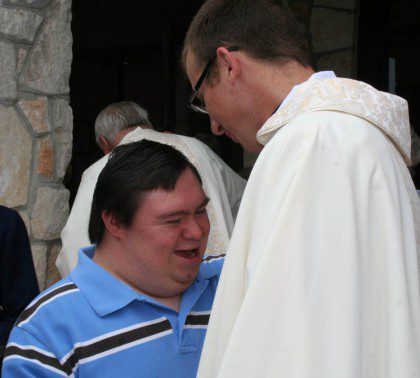 For Paul the integration of all peoples into the church constitutes, actually, the “mysterion” hidden from past generations and now revealed (Cf. Col. 1:26-28). From his own experience of having been joined to Christ when he was persecutor and distant, he grew in his awareness of the gratuitousness of salvation offered in Christ and of the reconciling role played by his love for all peoples, distant or near. It was from this conviction that Paul’s sense of urgency about his mission to the nations arose: “For if I preach the gospel, that gives me no ground for boasting. For necessity is laid upon me. Woe to me if I do not preach the gospel (1Cor. 9:16). Complementing this universality is the abolition of differences and exclusions among those who have been integrated into Christ: “There is neither Jew nor Greek, there is neither slave nor free, there is neither male nor female; for you are all one in Christ Jesus” (Gal. 3:28).
For Paul the integration of all peoples into the church constitutes, actually, the “mysterion” hidden from past generations and now revealed (Cf. Col. 1:26-28). From his own experience of having been joined to Christ when he was persecutor and distant, he grew in his awareness of the gratuitousness of salvation offered in Christ and of the reconciling role played by his love for all peoples, distant or near. It was from this conviction that Paul’s sense of urgency about his mission to the nations arose: “For if I preach the gospel, that gives me no ground for boasting. For necessity is laid upon me. Woe to me if I do not preach the gospel (1Cor. 9:16). Complementing this universality is the abolition of differences and exclusions among those who have been integrated into Christ: “There is neither Jew nor Greek, there is neither slave nor free, there is neither male nor female; for you are all one in Christ Jesus” (Gal. 3:28).
This kind of universality and inclusion has its beginning in the dynamic activity of the Spirit who guides the church to walk the streets of every nation, taking the gospel into diverse cultural environments. Within a new community any diversity demands clear distinction and coming to terms with what is fundamental and unifying in contrast to what is particular to a culture or else running the risk of reducing everything to uniformity. The confrontation between Peter and Paul at Antioch (Acts 15:1-4; Gal. 2:11-14) showed that internationality and multiculturalism were not easy to deal with, all the while remaining basic to the nature of the church. Paul, particularly, had to combat throughout his life to open hearts to the all-embracing and universal love of God and to the equality in dignity of each brother and sister redeemed by Christ and reborn through the Spirit. Freedom and diversity are not incompatible with the unity of the Body of Christ. Paul’s missionary endeavors and his lasting desire to take the gospel to new peoples both spring from his understanding of the all-embracive love of God who offers life and salvation to every human being. It is the love of Christ which moves him to be at the service of this plan (cf. Gal. 2:20; 2Cor. 5:14).
The early Christian community experience helps us grasp the role of multiculturalism in the very nature of the church. Attachment to Christ does not mean communion with him in the fullness of the heavenly kingdom alone. Transformation effected by the Spirit always leads toward community. This is the setting where one learns to change one’s relationships, to turn fraternal love into the way to accept differences, reconcile divisions, and make sharing, collaboration and mutual esteem possible. God’s plan for Christ is not limited to making harmonious communities into little islands of peace in a fractured world. He desires to bring everyone to his salvation and reunite all the peoples of the earth into one single family. Despite some relative resistance, the Spirit moved the church of Jerusalem into Palestine, from Antioch into Asia Minor and Europe, sending it out to the then known world. This has always been the way of the church throughout the centuries. Thus, a community or a local church (or en entity of the congregation) that would turn in on itself, on its capacities and needs, without any glance beyond its own boundaries and preoccupations, would not be faithful to God’s plan nor to the mission which He had set for them.
The dynamic activity of the Spirit recognizes there are differences, divisions, and conflicts. The Spirit begins with the transformation of persons and communities and makes reconciliation, sharing, and self-giving on behalf of others possible. For this reason every community and every local church, just like every entity of the congregation, always possesses a local and a universal dimension. Locally (and this is not the same as nationally), this is achieved through insertion in the work setting in which it is found, but universally this is achieved through communion of its members and its openness to the world-wide church. Within each such community there cannot be, therefore, class differences like “natives“ or “foreigners”. All are members of Christ and brothers and sisters of each other apart from their origin or passport.
2 The Example of Christ
Openness to the other and to the different which leads to universality has for its sole model the Christ, the Son of God become member of our humanity. “Though He was in the form of God, Jesus did not count equality with God a thing to be grasped, but emptied himself, taking the form of a servant, being born in the likeness of men” (Phil. 2:6ff); “. . .and dwelt among us” (John 1:14). The Word of God is radically foreign to our culture and to our human existence, but obedient to the Father’s will – “Behold, I come to do your will” (Heb. 10:7) – he wiped out all distance and extraneousness. While remaining sinless, He took on our human condition and became subject to our weakness and sinfulness. He remained faithful and at our side throughout his suffering and death. He was trained for the drama by the humanity he assumed and became the source and model of obedience to the Father’s plan and the firstborn of reconciled humanity for all those who follow him (cf. Heb. 5:7-10). Becoming man, Christ “emptied himself” (Phil. 2:7) yet never abdicated his status as Son of God. In his incarnation, he learned to accept his existence as Son in a life as man and member of a people and in a human culture. Thus, both Son of God and Son of man, he established a new way of living among men and opened a way to access the life of God.
The supreme manifestation of this redeeming intimacy is the blood and water that issued from the Heart of Jesus opened on the cross (John 19:31-35) where John the evangelist invites us to contemplate the gift of the Spirit who creates a new humanity. The new humanity is set forth under the banner of reconciliation between the first covenant – represented by the mother – and the new covenant prefigured by the home of the disciple which was to receive the mother and all of humanity (John 19:26ff).
 As we are formed in the spirituality of the Heart of Christ we discover in the mystery of the incarnation and the gift of the spirit of the Risen Lord the basis and model of our mission and our communion both of which are open to all humanity according to the will of God. The first sense of mission we have early on at home, or later in our faraway mission, is that of leaping beyond the barriers of diversity or extraneousness. This missionary sense makes us neighbors to persons and able to understand their way of speaking, thinking and acting, of sharing what makes them happy or sad, and putting our lives at their service. This sense is the first proclamation of the gospel. This sense will be accompanied in time by the Word, community organization, and development. In this fashion the work of redemption will carry on and complete the sufferings of Christ in everyone who allows himself to imitate Him and work for his people (cf. Phil. 3:10; Col. 1:24).
As we are formed in the spirituality of the Heart of Christ we discover in the mystery of the incarnation and the gift of the spirit of the Risen Lord the basis and model of our mission and our communion both of which are open to all humanity according to the will of God. The first sense of mission we have early on at home, or later in our faraway mission, is that of leaping beyond the barriers of diversity or extraneousness. This missionary sense makes us neighbors to persons and able to understand their way of speaking, thinking and acting, of sharing what makes them happy or sad, and putting our lives at their service. This sense is the first proclamation of the gospel. This sense will be accompanied in time by the Word, community organization, and development. In this fashion the work of redemption will carry on and complete the sufferings of Christ in everyone who allows himself to imitate Him and work for his people (cf. Phil. 3:10; Col. 1:24).
3 In the Light of our History and Spirituality
Openness to internationalilty expresses a fundamental trait of our vocation before the Heart of Christ, a configuration to his “ecce venio” to bring to pass the Father’s plan and establish His Kingdom in souls and in society. This is equally true of the “sint unum” to make us brothers in our differences. This is also true of “reparation” which is a positive effort to bring together a divided humanity, gluing together its cracks and creating new models of living together among persons, peoples, and cultures.
From the very outset of his work, Fr. Dehon integrated internationality in his plan for the congregation. His personal union to the Heart of Christ, his Roman training, the experience of Vatican Council I, his travels, all these prepared him for a vision of the world that went beyond the nationalistic perceptions widely held throughout the church of his time. Shortly after the foundation at Saint Quentin, through personal conviction as well as due to the troubles in France at the time, he took his work to neighboring countries where the better part of the first SCJs received their training. Less than 20 years after he began, the first missions outside the continent of Europe were in existence, first in Latin American, then Africa, Asia, and North America. At the Founder’s death, the congregation was present in more than 20 countries, on four continents. Universality and the missions “ad gentes” were both the object of his deepest conviction and characterized the future of the congregation as a whole.
Once the congregation was organized into provinces, the promotion of new missions passed gradually to the various European entities. The international makeup we have in the congregation today and the service we give the church and society in so many countries throughout the world are the outcome of the yearning to mission beyond our borders. The spirituality based on the charism of the Founder has flourished in many types of apostolate but is particularly manifest in the mission “ad gentes”. It is this fact that marks the priority given in formation and in province planning and allows the congregation to be present in 41 countries today.
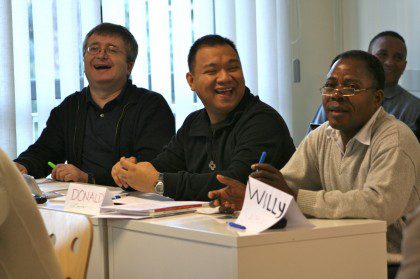 It is a fact, however, that we are at a moment of great changes with respect to our past. The better part of the provinces that made the greatest contribution to our missionary effort is now aging and sees their vitality and missionary prospects diminishing. On the other hand, new entities with greater numbers of young people lack the resources and some sense of tradition to mission beyond their borders. Despite their reduction in number overall, more than 80% of today’s missionaries in the congregation are originally from Europe. One must add that at this time there are few entities that are capable of taking on a new mission by themselves in terms of personnel and financial resources. If we do not find motivation, vision, and international collaboration, the congregation’s future will encounter difficulty in terms of vitality, internal services, and missions.
It is a fact, however, that we are at a moment of great changes with respect to our past. The better part of the provinces that made the greatest contribution to our missionary effort is now aging and sees their vitality and missionary prospects diminishing. On the other hand, new entities with greater numbers of young people lack the resources and some sense of tradition to mission beyond their borders. Despite their reduction in number overall, more than 80% of today’s missionaries in the congregation are originally from Europe. One must add that at this time there are few entities that are capable of taking on a new mission by themselves in terms of personnel and financial resources. If we do not find motivation, vision, and international collaboration, the congregation’s future will encounter difficulty in terms of vitality, internal services, and missions.
Geographic and cultural differences undoubtedly enrich the life of the congregation and offer new ways of being present and engaging in mission. However, such differences can also serve as a dangerous force for fragmentation and shutting down at the regional and national levels. In the past, internationality was achieved through the provinces that sent missionaries. Once the early missions achieved autonomy, such bonds became more tenuous. In many cases, one notes a tendency toward isolation and closure within local scenes and a diminishment in participation in the life of the congregation as a whole. To harvest the richness of diversity as well as to consolidate our unity, to avoid fragmentation as well as the effects of nationalism, we need to develop new forms of communication, openness, and communion.
Our era offers us new prospects and possibilities that can help us toward this change and renewal. The world in which we live, despite all the problems and turning inward, is ever more open and connected and continuously offering new occasions for communication and collaboration on a world-wide scale. Ushering out of Vatican Council II, the church gives us an exciting portrait of commitment at the local church level and building unity in the diversity of cultures. Consecrated Life, while dealing with the challenges of adaptation to modern life, is ahead of its time in the work of evangelization, attentiveness to the weak, and at the centers of intercultural and religious exchange.
Our own congregation is taking significant steps in coming to appreciate its own charism and role in the church and society. A common understanding is developing as are new forms of togetherness and collaboration among entities. “We, the Congregation” has made great strides in the Dehonian way of thinking. First of all, a renewed understanding of our inherited charism that lies at the foundation of our communion has contributed to it. Contributing to it also are the dynamic efforts of sharing and planning together as well as the biennial meetings of the entity superiors which function like a “senate” for discernment and direction for the entire congregation; the coordination of continent-wide initiatives; formation made at the general and continent-wide levels, especially the courses for formation directors, treasurers, and local superiors; better coordination of financial sharing; the work groups in special sectors like formation, education of youth, the Dehonian family, and aging. The fruits of these efforts are already visible and motivate us to continue them.
Therefore to consolidate and render this frame of mind more effective and to respond to the challenges of our times it is indispensable to establish a new aptitude for motivating and coordinating the mobility of persons within the entire congregation. Along this line of reasoning, the general conference of Warsaw of 2006 explicitly affirmed that “each confrere should have the opportunity to make himself available to participate in missionary projects with due discernment and the approval of the entity which sends him” after having stated that “the mission beyond local borders is a basic dimension of our consecration” (cf. Final Document of the Warsaw Conference, nn. 2 & 7). If we intend to make this mindset work in practice we need to create realistic conditions for its achievement and coordination, at all levels: personal, entity-wide, congregational. We should be able to find a way to set up and make possible each individual’s participation in our international mission and include this mission in the apostolic plan of every entity and to coordinate it at the congregational level. Those religious institutes that have not succeeded in operating with an international dimension find themselves in deep trouble today while those who have effectively integrated this dimension into their lives are more ready and able to deal with modern challenges.
4 The Road to Universality
Faithful to our origins and responsive to our times, we certainly need new dynamics and forms of organization. But above all we must proceed from our spiritual heritage. We must allow that same Spirit that moved Fr. Dehon to establish the congregation to guide us as we respond to the needs of the church and the world. This cultural patrimony allows us to acculturate our spirituality in the various places we are present without loss of our identity and special charism. Thus we are able to make better contributions to the development of the church locally and to the congregation while at the same time opening up our hearts to our mission to the world.
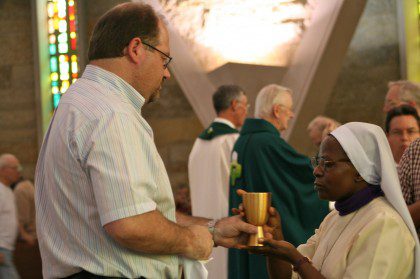 Our mission has a special need for a universal and intercultural dimension. It is, after all, an essential quality of the gospel and our way of living in the church. Furthermore, the present situation calls for it. Exchanging personnel will allow even our smallest entities in the congregation to participate in a common mission, prevent their isolation, and allow for other confreres to come and collaborate in their internal life and mission. Living in our globalized world, especially in our large cities, the establishment of intercultural communities can present a suitable opportunity to be active in a multicultural environment. Likewise, it can make a vital contribution to the renewal of aging entities and help consolidate newer ones. Those provinces that are better off, on the other hand, will be able to give their young religious a more ample vision and present prospects that can contribute to the vitality of the Institute. If we allow ourselves to narrow down to our own capacities and limits, we become poorer for it and the quality of our life and mission will suffer for it. Everyone feels more fragile in our day and this can turn out good for us if it leads us to greater contact and collaboration. If we are open to communion in the congregation and the church, we will all benefit by it and will become more able to be of service to the gospel in the world.
Our mission has a special need for a universal and intercultural dimension. It is, after all, an essential quality of the gospel and our way of living in the church. Furthermore, the present situation calls for it. Exchanging personnel will allow even our smallest entities in the congregation to participate in a common mission, prevent their isolation, and allow for other confreres to come and collaborate in their internal life and mission. Living in our globalized world, especially in our large cities, the establishment of intercultural communities can present a suitable opportunity to be active in a multicultural environment. Likewise, it can make a vital contribution to the renewal of aging entities and help consolidate newer ones. Those provinces that are better off, on the other hand, will be able to give their young religious a more ample vision and present prospects that can contribute to the vitality of the Institute. If we allow ourselves to narrow down to our own capacities and limits, we become poorer for it and the quality of our life and mission will suffer for it. Everyone feels more fragile in our day and this can turn out good for us if it leads us to greater contact and collaboration. If we are open to communion in the congregation and the church, we will all benefit by it and will become more able to be of service to the gospel in the world.
As we seek out new ways, it is never out of order to emphasize the importance of formation. Initial and continuing formation along with specialization studies are a golden field for collaboration and personnel exchange, whether of students, as well as of formation directors and professors. We already have many examples of such sharing of personnel and resources in the past and present; these need additional development. The reduced numbers of student members in many entities require international openness and collaboration. However, even when they are numerous we should not overlook the wealth that derives from the intercultural character found in a formation community among students and directors. Our international scholasticates on various continents play an increasingly important and meaningful role in the development of our young members which should also be supported and developed . We would thus be able to form ourselves more suitably for our universal mission and for the multiculturalism that is growing throughout the world. Language study, actual multicultural experience arising from study or pastoral duties, can be integrated into formation programs in every entity and allow us to be better prepared for our mission.
Such formation ought to be able to be shared in an intercultural context. Sending a confrere to the missions or receiving him into our community demands a change of outlook, an ability to live a communion open to universality. The difficulty is, however, that the growing number of international communities have indicated to us the specific need to clearly define the international aspect of formation and to seek to its specific preparation among those who leave for the missions or who welcome confreres from elsewhere. We are moved to this by the universal love of God, revealed in Christ, who makes fraternity possible as a gift from his Spirit.
One essential aspect of communion and mission is the sharing of material goods, a matter to which we devoted our letter last year. Putting our goods to common use begins in each individual community and grows throughout the entire entity, but it should also include the congregation. The international aspect of financial solidarity acquires new importance when one sees the weakening of those entities which, up till now, had made great financial contributions toward the life and the mission of the congregation. Here we need to gradually replace the simple distinction between givers and receivers with the logic of common participation. All should contribute, in large or small measure according to their abilities, so that there is enough to face our needs. We are making significant progress in such sharing and in coordinating solidarity among entities. We still have, however, a long way to go to achieve local self-reliance and greater congregation-wide co-responsibility in acquiring and managing the resources necessary for our life and in solidarity with those who are most in need.
Throughout this letter, we have repeatedly reminded readers of the need for new forms of sharing and coordination at the level of the congregation as a whole. This should not be interpreted, however, as a plan for centralizing the congregation. Attentive to our tradition, such a course would be neither reasonable nor helpful. The model for universality offered by the gospel is not achieved through people who are rootless and deprived of their cultural identity. To the contrary, the very meaning of the incarnation demands one to walk the earth and transfer the salvific presence of God into local cultural expressions and organizations. It is this way of thinking that impels us, therefore, to reach out for other places and cultures to continue the same process. We need to develop our understanding of fraternity, sharing, and service in every one of our entities. Each one needs its own autonomy and particular style of development. Autonomy, however, should not lead to isolation nor compromise our ability to serve the gospel by taking it “to the ends of the earth”. What we must find are ways to combine the two environments, local and universal, in keeping with the principles of complementary and fraternal subsidiarity. Organisms for consultation and coordination, as for example the Major Superiors’ meeting, the collaboration in different sectors at the continental level, the accords and cooperation among various entities, all these form dynamic and creative possibilities for developing communion and common missions. Conversely, even the possibilities of the general administration to coordinate matters need to be thought through in service to the actual situation of the congregation together with the role of the entities. In this way alone can we discover and deal with the riches and requirements we have to foster our life and carry out our mission for everyone’s benefit. In the coming years, several important meetings of the Major Superiors are planned at the continental and congregational levels, in addition to the General Conference, particularly the next General Chapter. These should all be significant opportunities to gather together the reflections of the members throughout the world and to seek direction or better coordination of the entire congregation in light of communion and mission in the international setting.
Conclusion
The Feast of the Heart of Christ which we celebrate constitutes an invitation to the entire church, and especially to us, Priests of the Sacred Heart of Jesus, to become open to the universal love of God revealed in his Son. He is come to share our humanity and bring us the gift of the Spirit which transforms us into his image, makes us participants in his very life and promoters of a new humanity according to God’s plan.
In a world of rapid change, we seek to live this gift in discernment of the signs of our times, seeking ways to be faithful and consistent with our vocational charism and respond to the challenges of history. We are aware of our weaknesses and poverty; at the same time we are aware of the riches of communion in the diversity of our origins and cultures, all made possible by the Spirit who unites and invites us.
May the Lord Jesus hear our prayer, accompany our reflection, open our heart to the breadth of his love and continue to renew our service to his Kingdom throughout the entire world.
We wish you a joyful and fruitful Feast of the Sacred Heart.
Rome, May 25, 2012
Fr. José Ornelas Carvalho
SCJ Superior General
and his Council
Click here to download a prayer service for the Feast of the Sacred Heart

